Kanboard is an open-source application designed to streamline project management tasks for teams. It includes essential features for creating tasks, managing projects, and tracking progress, ensuring a seamless experience for both team members and project stakeholders. When selecting a hosting provider for Kanboard, Hetzner stands out as a leading cloud infrastructure provider known for its simplicity, scalability, and user-friendly approach. ServerAvatar simplifies the deployment of Kanboard on Hetzner VPS (Virtual Private Servers) through an intuitive interface, automating complex setup procedures, and allowing users with minimal technical knowledge to efficiently configure and manage their server environments.
Create a Server in Hetzner
Getting Started with Hetzner:
Hetzner provides a range of services like dedicated hosting, virtual private servers, colocation services, and domain registration. Hetzner is known for having reliable systems and competitive prices in web hosting. Its services work well for both individual users and businesses that need strong hosting options.
Step 1: Login to Hetzner Cloud Console
- Go to the Hetzner Cloud website and sign in using your credentials.
Step 2: Create a New Project (Optional)
- If you don't have an existing project, create a new one by clicking on the New Project button.
![]()
- Enter a name for your project and click Add Project.
![]()
Step 3: Select a Project
- Select the project in which you wish to create your server.
![]()
Step 4: Create a New Hetzner Cloud Server
- Navigate to the Servers sub-menu and click on Add Server to begin creating your server.
![]()
Step 5: Configure your server
-
Select a Location: Select the data center location where you want to deploy your server. Choose the region that is closest to your target audience for better performance.
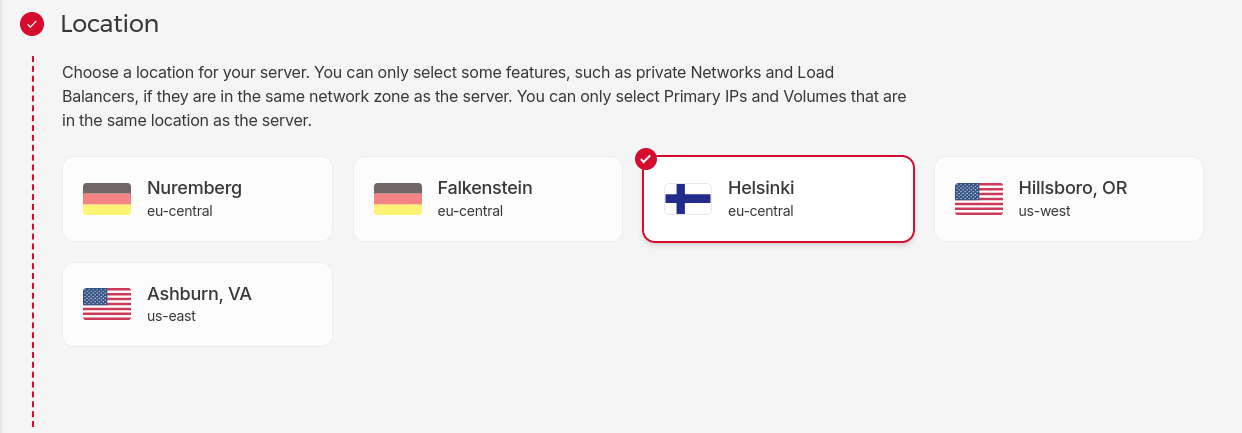
-
Select an Image: ServerAvatar supports both Ubuntu 20.04 and Ubuntu 22.04. Therefore, choose one of these supported operating systems.
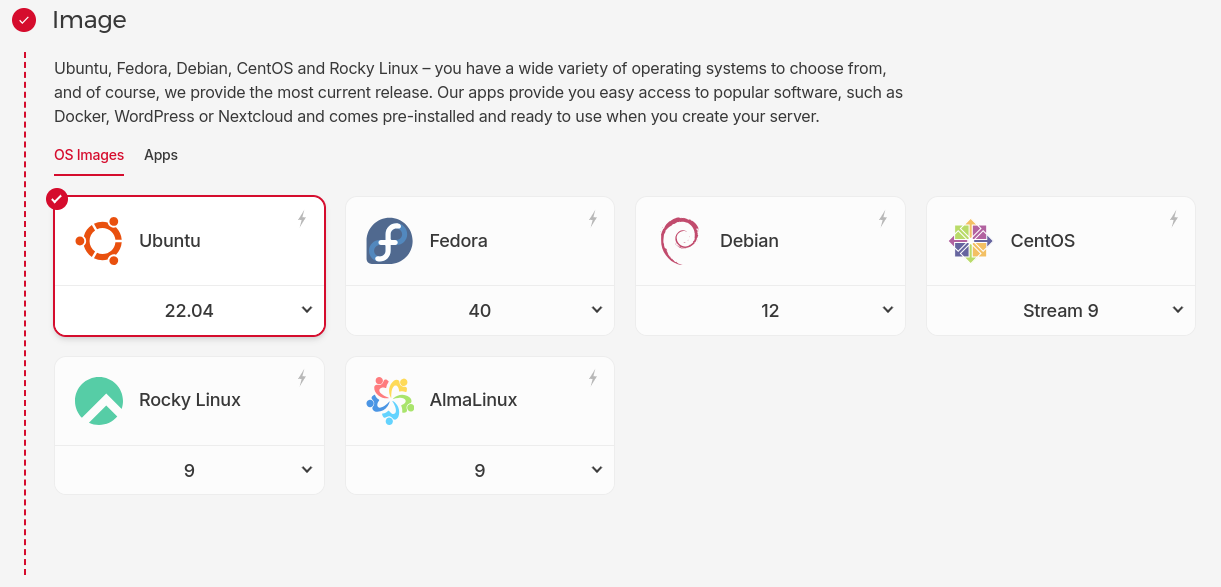
-
Select a Server Type: Hetzner provides various plans with different configurations of CPU, RAM, and storage. Select the server type based on your requirements. To host Kanboard, 1GB or more of RAM is required for better performance, and minimal storage is required, but ensure you have enough space for data and backups.
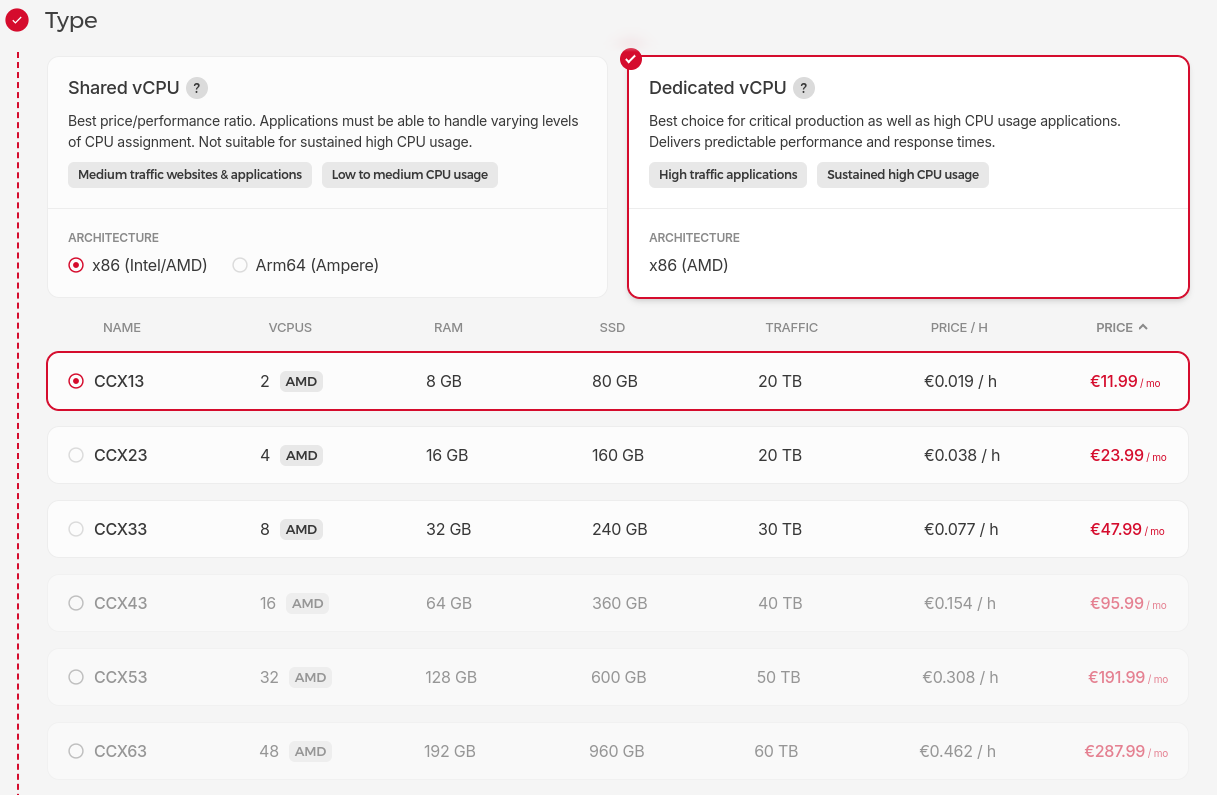
-
Select Networking: Select from three networking options for your server. Private networks allow you to securely connect servers within the same data center without going over the public internet.
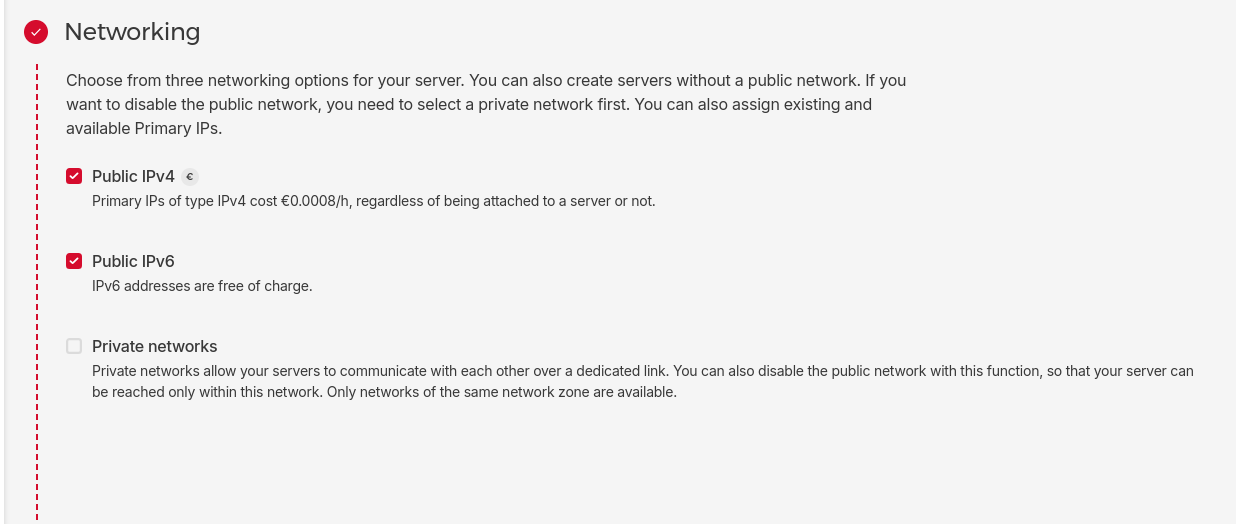
-
SSH Key or Root Password: Select an SSH Key if you want to authenticate with an SSH key. This method is recommended over using a root password for enhanced security. If you choose SSH key authentication, Hetzner will disable password-based authentication by default. Otherwise, you will receive the root password via email.
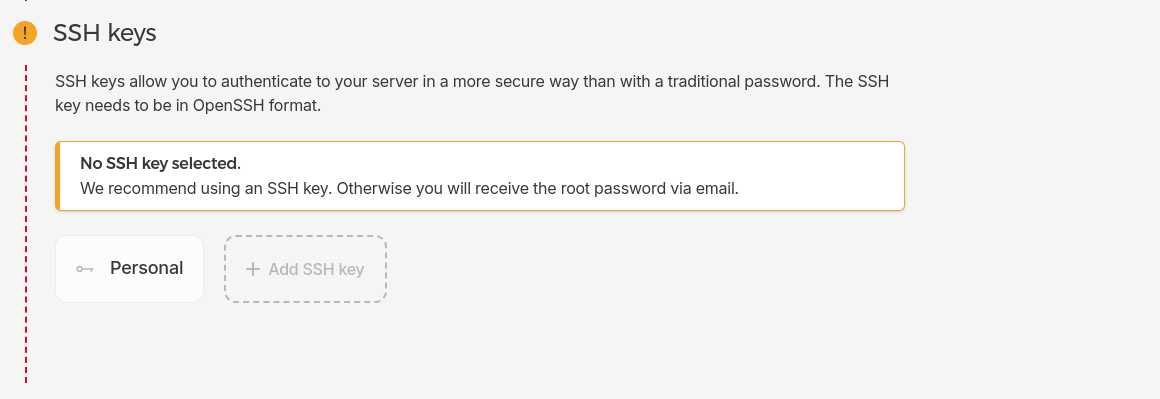
-
Add a Firewall Rule: Configure firewall rules to control incoming and outgoing traffic based on IP addresses, ports, and protocols for improved security.

- Additional Options (Optional): Configure additional options such as Backups, Placement Groups, Volumes, Labels, and Cloud Config as per your Requirements.
-
Give a Server Name: Enter a server name for easy identification.

-
Finalize and Create: Review your configuration settings to ensure that everything is configured correctly. Click on the Create & Buy Now button.9. Finalize and Create: Review your configuration settings to ensure that everything is configured correctly. Click on the Create & Buy Now button.
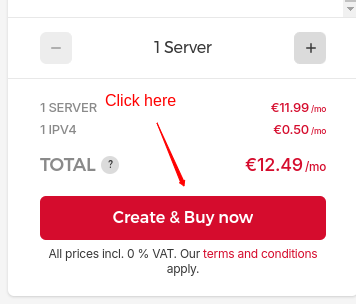
Step 6: Access Your Server
- Once the server is deployed, it will appear on your Hetzner Cloud dashboard. Use the provided IP address and SSH key (if configured) to access your server via SSH. Now, You can connect your Server with ServerAvatar for Server management.
![]()
Initial Server Configuration
The Initial server configuration includes the installation and configuration of various packages required to host your website. Usually, You have to write commands and modify configuration files. Luckily, With ServerAvatar, Your full server configuration and optimization can be automated.
Here are the three ways to automatically configure your server with ServerAvatar.
Connect a server using a direct method
- Login/Register to ServerAvatar account, click the Create button from the right side of the screen, and select Server from the dropdown.
- Select Direct Method in the serve connecting method section.
- Type the Server Name as per your choice.
- Select a Tech Stack as per your need. You can either select Apache, Nginx, OpenLiteSpeed or Node Stack.
- Select a Database: MySQL, MariaDB or MongoDB.
- Enable the toggle if you want to install the latest LTS version of node.js on your server.
- Select a Management plan and click the Connect Now button.
- You’ll see the command on your screen. Login to your server using an ssh connection and execute that command as a root user.
- The server connection process will be started on your ServerAvatar account after executing the command.
Connect a server using integration
- Login/Register to your ServerAvatar account, navigate to the Integration tab from the sidebar of the panel, and access Cloud Platform from the dropdown.
- Now Select a cloud platform you want to link with ServerAvatar.
- The popup form will appear on your screen. Enter details to link your cloud provider account. The integration method is different based on the cloud provider you select.
- You can integrate five different cloud provider platforms with ServerAvatar, which is-
Check the above link of cloud platforms to know more about integrating cloud platforms with ServeAvatar.
Connect a server using commands
Step 1. Login to your server using root user
Once you create a server as per your requirements, connect to your server using an ssh connection and execute the below three commands as a root user in your server console area.
wget https://srvr.so/install
chmod +x install
./install
Step 2. Select a web server
It will ask you which web server you would like to install on your server: Apache, Nginx, OpenLiteSpeed or Node Stack. Type anyone that you would like to install on your server and hit the enter button.
Step 3. Claim your server
Completing the process will give you a link to claim your server.
Open the link on your browser to access the ServerAvatar server panel.
Install and Setup Kanboard on cloud using ServerAvatar
Step1: Create Kanboard Database
The Kanboard installation process requires database Credentials. So, to create a MySQL database for Kanboard, Access the Database tab on the ServerAvatar server panel to create a Database.
![]()
To create a Database, Enter the details, such as the Database Name, in the database creation form like the image below.
![]()
Congratulations! You've successfully created your database.
Step 2: Create a PHP Application
Access the Applications tab from the server panel to create a new PHP application for Kanboard. Now, create an application, click on the Applications tab, then click the Create button on the server panel.
![]()
To create an application and proceed with the installation and deployment of Kanboard. You need to feel the prerequisite for Kanboard.
Please select an application name of your choice. Afterward, input the domain name where you'd like to direct your URL. You have the choice between a test domain or a primary domain. If you decide on the test domain, you can use ".serveravatar" as a test domain extension. This flexibility ensures you can make the perfect selection for your project.
Note that:
If you want to host Kanboard on your domain, then make sure to point your domain to the current IP address of your server, and for that:
- Log in to your domain provider site, where you buy your domain. Click here for more info about your domain name.
- Access DNS Manager to edit your DNS records (contact the support team if you don’t find them)
- Change the IP address of A Record of your website to the > current server’s IP address.
To host Kanboard on your subdomain, for example, Kanboard.yourdomain.com, create a new application with the subdomain as your primary domain and follow the same procedure. For accessing Opencart on the subdomain, you need to add your subdomain on A Record that points to the current IP address of your server. To point to an IPV6 address, you would need to use an AAAA record.
![]()
Now, you will clone Kanboard through the available repository in GitHub. so,
Select a method: Git
Select a Service Provider: GitHub
Select a Repository Type: Public
Clone HTTPS URL: https://github.com/kanboard/kanboard.git
Branch: main
![]()
Let's take the next step in creating your application. Now, you need to set up deployment scripts. These are the manually entered commands that will run automatically after you've cloned the repository.
Installing Kanboard requires running manual scripts or commands in the deployment process.
Deployment Scripts:
cp config.default.php config.php
To proceed further, select checkbox labeled "Show Advanced Options". You'll find this checkbox right below the deployment scripts section.
The next step is to create a system user for your application. You have the option to either select an existing user or create a new one dedicated to this application.
Now, let's select the PHP version. Choose PHP version 8.1 or a newer version if available. Regarding the custom webroot for Kanboard, it should be blank(do not write) as illustrated in the provided snapshot. We are specifically looking for either an "index.php" or "index.html" file within this custom setup.
Select PHP Version: PHP version 7.4 or higher
Custom Webroot: (leave it blank)
![]()
With all these settings in place, go ahead and click on the "Create Application" button to complete the procedure.
Congratulations! You've successfully created your application.
Step 3: Config Database with Application
In this step, we're connecting the database we created in Step 1 with the application from Step 2. To configure the database, we need to edit the config.php file.
To edit the config file, you can access the public_html directory from your file manager or navigate through the directory path.
![]()
Proceed to open it. Inside, you'll need to enter the database credentials that were created in Step 1. To establish a connection between the database and the application, enter the database credential we have already made. You can access all your database credentials, like database driver, database name, username, hostname, and password, by accessing the database tab from the server panel.
Enter the following database credential we have already created in ServerAvatar:
DB_DRIVER: MySQL
DB_USERNAME: Username of database
DB_PASSWORD: Database password
DB_HOSTNAME: localhost
DB_NAME: Database name
![]()
Don't forget to save the changes you've made to the "config.php" file.
The next step is, to update your directory permission.
![]()
Congratulations! Successfully deployed Kanboard on the server through the ServerAvatar.
You can access it by visiting your domainname in your web browser.
Step 4: Access Kanboard Web UI
Now, access the site URL from the Application panel to log into Kanboard.
![]()
To login, use following credentials:
Username: admin
Password: admin
You successfully logged into Kanboard. You should get to a dashboard like below.
![]()
Reset admin password
To reset your admin login credentials follow the given path: Admin > Users Management > admin > Change password.
![]()
Input current and new passwords for admin users.
![]()
Congratulations! Successfully install and setup Kanboard on the server through the ServerAvatar.
Check Kanboard documentation for more information related to installation and functionalities.